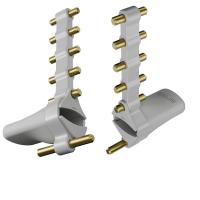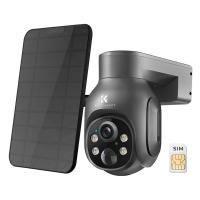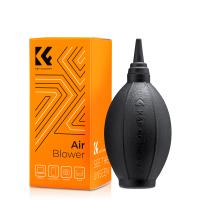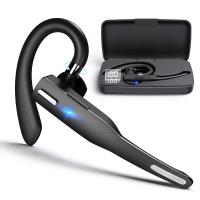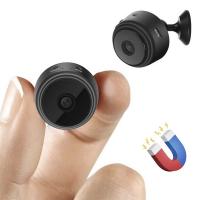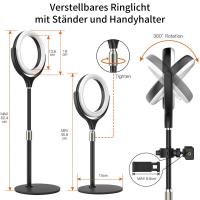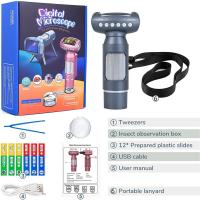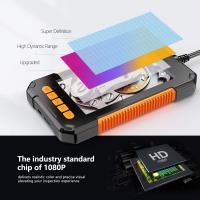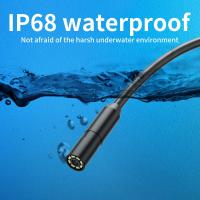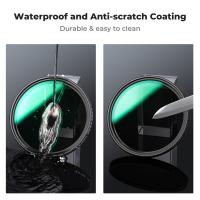Can Endoscopes Be Sterilized ?
Yes, endoscopes can be sterilized using various methods such as high-level disinfection or steam sterilization.
1、 Sterilization methods for endoscopes: Overview and latest advancements.
Sterilization methods for endoscopes: Overview and latest advancements.
Yes, endoscopes can be sterilized using various methods to ensure patient safety and prevent the transmission of infections. Sterilization is a critical step in the reprocessing of endoscopes, as these instruments come into direct contact with the body's internal organs and tissues.
The most commonly used method for endoscope sterilization is high-level disinfection (HLD). HLD involves the use of chemical agents, such as glutaraldehyde or peracetic acid, to kill or inactivate microorganisms on the surface of the endoscope. This method is effective in eliminating most bacteria, viruses, and fungi, but it may not completely eliminate all types of microorganisms, including some highly resistant spores.
To enhance the effectiveness of HLD, some facilities have adopted additional measures, such as using automated endoscope reprocessors (AERs) or implementing stringent manual cleaning protocols. AERs provide standardized and controlled cleaning, disinfection, and rinsing cycles, reducing the risk of human error and ensuring consistent results. Manual cleaning protocols involve meticulous cleaning of the endoscope's channels and components using brushes, detergents, and flushing with water.
In recent years, there have been advancements in endoscope sterilization methods to further improve patient safety. One such advancement is the use of sterilization technologies that go beyond HLD. These include low-temperature hydrogen peroxide gas plasma sterilization and ethylene oxide sterilization. These methods are capable of achieving higher levels of microbial inactivation, including spores, and are particularly useful for endoscopes that cannot withstand high temperatures or moisture.
Another area of advancement is the development of disposable or single-use endoscopes. These endoscopes are designed for a single patient use and eliminate the need for reprocessing and sterilization. While disposable endoscopes offer convenience and reduced infection risk, they may not be suitable for all procedures or cost-effective for routine use.
In conclusion, endoscopes can be sterilized using various methods, with high-level disinfection being the most commonly used. Advancements in sterilization technologies, such as low-temperature hydrogen peroxide gas plasma and ethylene oxide sterilization, offer improved microbial inactivation. Additionally, the development of disposable endoscopes provides an alternative solution for reducing infection risk. It is important for healthcare facilities to stay updated with the latest advancements in endoscope sterilization to ensure patient safety and prevent the transmission of infections.
2、 High-level disinfection of endoscopes: Procedures and guidelines.
Yes, endoscopes can be sterilized through a process called high-level disinfection. High-level disinfection is a procedure that eliminates or inactivates all forms of microorganisms, including bacteria, viruses, fungi, and spores, from the surface of the endoscope. This process is crucial to ensure the safety of patients undergoing endoscopic procedures.
The high-level disinfection of endoscopes involves several steps. First, the endoscope is thoroughly cleaned to remove any organic material, such as blood or tissue, that may be present on its surface. This is typically done using enzymatic cleaners and manual brushing. After cleaning, the endoscope is rinsed and then subjected to a chemical disinfectant solution, such as glutaraldehyde or peracetic acid, which kills the remaining microorganisms. The endoscope is immersed in the disinfectant solution for a specific period of time, as recommended by the manufacturer or regulatory guidelines.
It is important to note that sterilization, which is the complete elimination of all forms of microbial life, including spores, is not typically achieved during the high-level disinfection process. However, high-level disinfection is considered sufficient for most endoscopic procedures, as the risk of infection from residual microorganisms is low.
It is worth mentioning that there have been advancements in endoscope reprocessing techniques in recent years. For instance, some facilities have started using automated endoscope reprocessors (AERs) that can provide standardized and consistent disinfection. Additionally, there is ongoing research and development in the field of endoscope sterilization, with the aim of improving the effectiveness and safety of the reprocessing procedures.
In conclusion, while endoscopes cannot be sterilized in the strictest sense, they can be effectively disinfected through high-level disinfection procedures. These procedures, when followed correctly, help to ensure the safety of patients undergoing endoscopic procedures by reducing the risk of infection.
3、 Sterilization vs. high-level disinfection for endoscopes: Key considerations.
Sterilization vs. high-level disinfection for endoscopes: Key considerations.
Endoscopes are essential medical devices used for diagnostic and therapeutic procedures. Ensuring their cleanliness and safety is of utmost importance to prevent the transmission of infections. The question of whether endoscopes can be sterilized or if high-level disinfection is sufficient has been a topic of debate in the medical community.
Traditionally, high-level disinfection has been the standard practice for endoscope reprocessing. This process involves the use of chemical agents to kill or inactivate most microorganisms, including bacteria, viruses, and fungi. However, recent studies have raised concerns about the effectiveness of high-level disinfection in completely eliminating all microorganisms, particularly those that are more resistant, such as certain types of bacteria and prions.
As a result, there is a growing interest in exploring sterilization methods for endoscopes. Sterilization is a process that aims to completely eliminate all forms of microbial life, including highly resistant microorganisms. However, achieving sterilization for endoscopes is challenging due to their complex design, which includes long, narrow channels that are difficult to access and clean thoroughly.
The latest point of view on this matter suggests that a combination of both high-level disinfection and sterilization may be the most effective approach. This approach involves using high-level disinfection as the primary method for routine reprocessing, followed by periodic sterilization to ensure the complete elimination of all microorganisms.
It is important to note that the choice between sterilization and high-level disinfection for endoscopes should be based on a thorough risk assessment, taking into consideration factors such as the type of procedure performed, the patient population, and the potential for transmission of infectious agents.
In conclusion, while high-level disinfection has been the traditional method for endoscope reprocessing, the latest point of view suggests that a combination of high-level disinfection and periodic sterilization may be the most effective approach. However, further research and guidelines are needed to establish the optimal reprocessing methods for endoscopes and ensure patient safety.
4、 Sterilization validation for endoscopes: Testing and standards.
Yes, endoscopes can be sterilized. Sterilization is a critical process in healthcare settings to ensure that medical devices, including endoscopes, are free from any microorganisms that could potentially cause infections.
The sterilization of endoscopes involves the elimination of all forms of microbial life, including bacteria, viruses, and fungi. This is achieved through various methods such as steam sterilization (autoclaving), ethylene oxide gas sterilization, hydrogen peroxide gas plasma sterilization, and low-temperature sterilization using peracetic acid or glutaraldehyde.
Sterilization validation for endoscopes is an essential step to ensure that the chosen sterilization method effectively eliminates all microorganisms. This validation process involves testing and adhering to specific standards set by regulatory bodies such as the Food and Drug Administration (FDA) and the International Organization for Standardization (ISO).
The latest point of view on endoscope sterilization is focused on improving the effectiveness and safety of the process. There have been concerns regarding the potential for residual contamination on endoscopes even after sterilization. This has led to the development of more stringent cleaning and disinfection protocols, as well as the implementation of advanced technologies such as automated endoscope reprocessors (AERs) to enhance the cleaning and sterilization process.
Additionally, there is ongoing research and development in the field of endoscope sterilization to address emerging challenges, such as the increasing prevalence of antibiotic-resistant microorganisms. New sterilization methods and technologies are being explored to ensure the complete elimination of these resistant strains.
In conclusion, endoscopes can be sterilized using various methods, and sterilization validation is crucial to ensure their effectiveness. Continuous advancements in cleaning and sterilization protocols, as well as the adoption of new technologies, are being pursued to improve the safety and reliability of endoscope sterilization.






